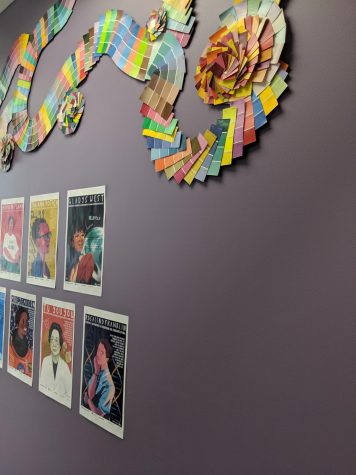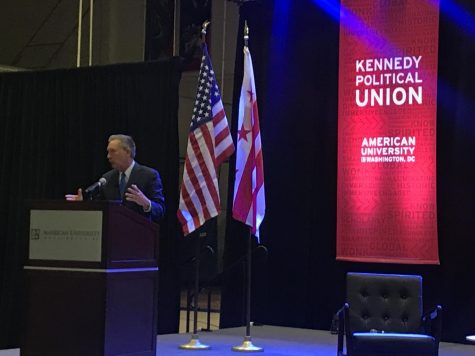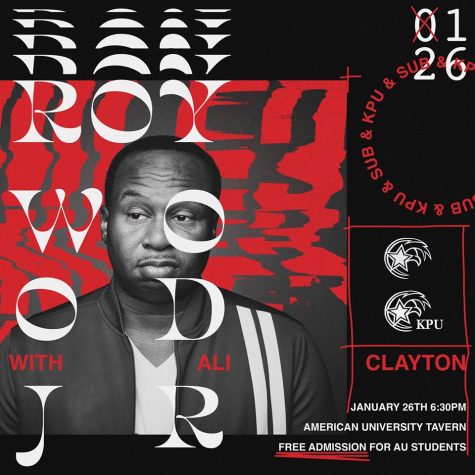Gentrification in the District: Exploring Ledroit Park

Just west of Shaw and south of Howard University, the tiny triangular neighborhood roughly five blocks wide and seven blocks long, colloquially known as LeDroit Park, is a place defined as being “in-between.”
Occasional Lexuses, Mercedes-Benzes, and Land Rovers dot the wide, tree-lined streets, but an empty can of Schlitz malt liquor, wrapped in a brown-paper bag, lies in a landscaped planter. Right down the street from an upscale gastropub, a pair of stray cats meander around a discarded Christmas tree on the sidewalk, trash crammed between the branches.
LeDroit Park is a neighborhood in the midst of rapid change, walking a fine line between preserving the predominantly black cultural legacy and acknowledging a growing influence of a more diverse, upwardly-mobile gentrifying class.
“You know, four years ago, my wife and I moved here because it was what we could afford and it was safe—enough,” said Joel Clark, who lives in the neighborhood. “It’s totally different now that these new businesses have come in on Florida Avenue and property values have gone up. I don’t even think that the us of four years ago could even afford to live here now.”
I don’t even think that the us of four years ago could even afford to live here now.
Clark, happily pushing his 10-month-old daughter on the swing set at the park, is a gangly white South African native with long, curly hair and a goofy grin. He says when he first moved to the neighborhood, the park was an abandoned lot usually used for prostitution and dealing drugs. When the new park opened in January 2011, it symbolized the gentrification slowly creeping into LeDroit since the neighborhood hit its low point in the decades following World War II—with high crime and low property values.
LeDroit Park was founded in 1873 as a whites-only gated suburb patrolled by security guards. The neighborhood started integrating in 1888 and subsequently reversed polarity, becoming almost entirely black by 1910, according to Eric Fidler, vice president of the LeDroit Park Civic Association.
According to the self-professed “amateur neighborhood historian,” the neighborhood then became a cultured home base for black elites like Paul Lawrence Dunbar and Ralph Bunche, often tied to the intelligentsia of Howard University. During World War II, the neighborhood fell on hard times, becoming gradually overwhelmed by vacant houses and crime until the process of gentrification began in the 1990s.
According to Filder’s analysis of 2010 Census data, LeDroit Park was 70 percent black, 21 percent white, and nine percent other races. However, the neighborhood has continued to change since then. Danielle Ricks, secretary and communications chair of the LeDroit Park Civic Association, says she would be “shocked” if 70 percent of LeDroit Park was still black.
“LDP is certainly not what it was 20, 10, even five years ago, and I think losing the historical and cultural identity of LDP is very sad,” Ricks said. “That being said, I recognize the contributions of the diverse community that has led to the vibrant neighborhood I see today—I have very mixed feelings about this.”
Ricks has a deep connection to the neighborhood. Her house has been in her family for over 100 years, passed down from her great grandfather. For college, Ricks stayed close to home; she attended Howard University and only lived a few blocks down the road.
“I’m seeing families who were here for years, friends of my father, who can no longer afford to live here,” Ricks said. “At the same time, I have Howard friends who wish to hell they had held on to their property in LeDroit.”
Ricks says she doesn’t want the neighborhood to become a carbon copy of Adams Morgan or Dupont Circle, both of which have become trendy, expensive and predominantly white.
“I love both of those parts of D.C., but I want the rich contributions of African-American artists and theologians to continue in my neighborhood,” Ricks said. “I’m afraid that won’t happen.”






